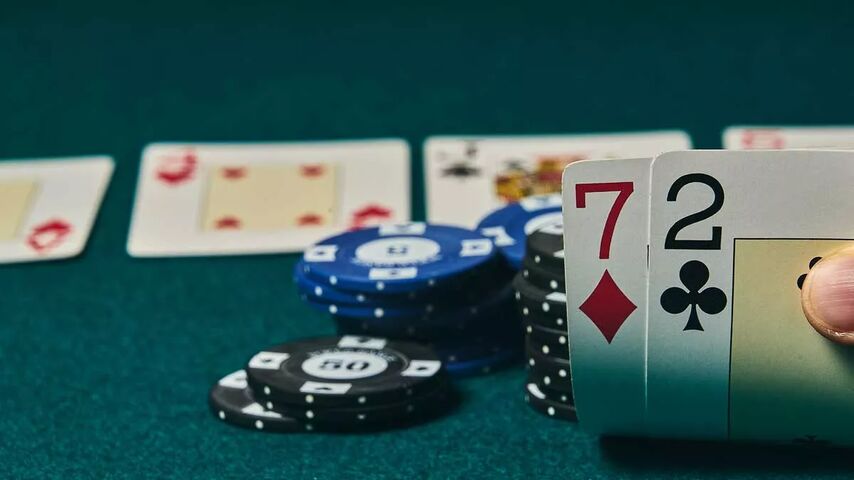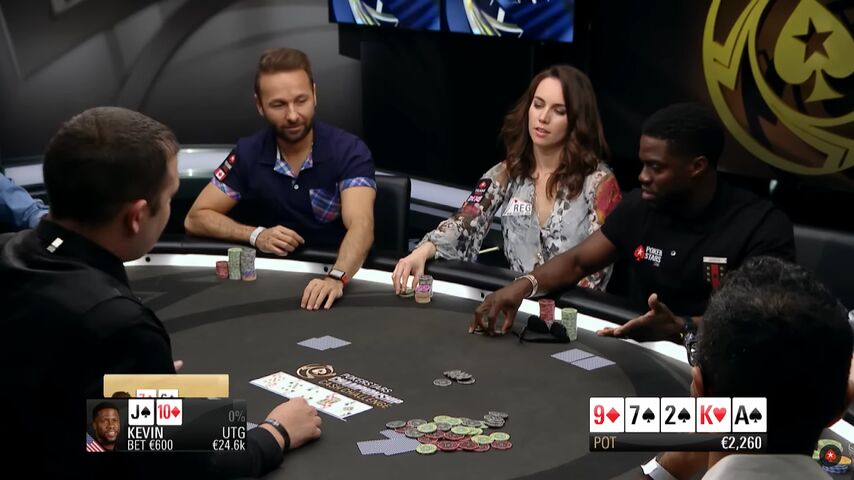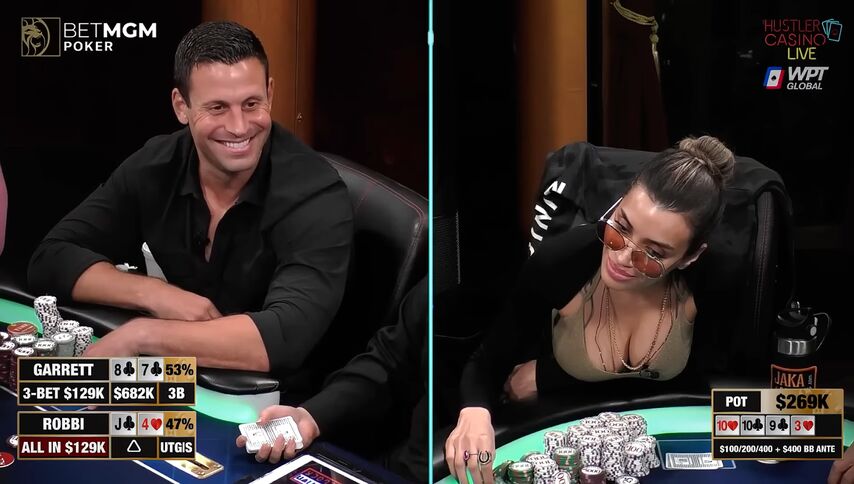A bluff is one of the most beloved aspects of poker. When we have a worse hand than our opponent, that doesn’t mean we can’t win. A bluff in poker is the act of betting and causing your opponents to fold stronger cards.
Bluffing carries some risk, but we can minimize that by choosing the correct situations to bluff. Beginners might think that bluffing is aggression applied at a random time, but experienced players know otherwise. A bluff is a well-constructed story that we tell our opponents. You’re telling them that you have a stronger hand, using poker chips instead of words.

If you want to improve your bluffs, you’ve come to the right place. Let’s go over the basic strategy for how to bluff in poker and how to avoid bluffing at the wrong time.
The Basic Ingredients to a Great Bluff in Poker
If you only wait for the best cards, you’ll never become a successful poker player. Sometimes, we’ve got to win without the best hand; that’s an essential tactic in poker.
What is a semi-bluff?
A bluff uses a hand with a very low chance of winning, but a semi-bluff is a hand with a draw, but not a complete hand combination. For example, if you have Jack-10 and the flop is 9-8-King, you could consider semi-bluffing with your hand.
These are some fundamental aspects of a bluff in poker:
The bluff has to be believable. A bluff is a story, and it needs to be believable. Ask yourself if your opponent is likely to believe the story you are telling them. Try to look at the situation from their perspective.
Let’s use an extreme example to demonstrate this point. Let’s imagine that you and an opponent have checked on the flop and checked on the turn. On the board, there are 2 Queens and 3 lower cards. You bet three-quarters of the pot on the river in an attempt to represent three-of-a-kind Queens.
On the river, it’s unlikely that your opponent will believe that you have the third Queen. From your opponent’s perspective, it looks as if your hand didn’t connect with the community cards. When you bluff in this situation, you’re more likely to get called by weaker hands that know you’re unlikely to have a strong hand combination.
Consider the size of your bet. If a bluff is a story, then your bet sizing is the words. You might not have top pair, but if you did, then how large would you bet?
This is where “representing a hand” is important. Like an actor plays a role, you must represent a hand in poker. If you choose to represent a hand, you need to consider how that hand would bet.
Representing a large hand doesn’t always mean making the biggest bet. Strong poker hands often make smaller bets to get value from weaker opponents. On the river, strong hands might make raises, 3-bets, or 4-bets; it all depends on the hand you are representing.
Bluff in-position more often than out-of-position. Table position gives you a huge edge in poker, especially for bluffs. Making a bluff from in position will give you a chance to make raises and act after seeing your opponent's action. It’s more difficult to bluff from out of position and your opponent gets to close the action after each betting round.
Understand and use your table image. Players who bluff too often will get called once their opponents notice the pattern. Just like The Boy Who Cried Wolf, the other players won't believe the story they are telling. For this reason, try to balance bluffing with value hands (hands that are stronger than your opponent’s).
Even Kevin Hart knows how to use table image, and though it's not the best bluff in poker history, he was able to use it to make Daniel Negreanu fold a pair.

Use your range advantage. The hands that you can have in a particular situation is your “range”. Poker players estimate each other’s ranges by noting bet sizes and other information at the table.
You can make your range stronger by using raises and 3-bets. The fewer hands you play, the stronger your overall range is. A player that isn’t involved in many pots probably has stronger cards than one who is playing lots of hands. Take a look at the graph below to see an example of a strong preflop range.
Lots of online poker players at micro and low stakes are too passive and under-bluff. After sitting for a while at the table, you will see this play out in front of you. Well-timed aggression can be the key to successfully bluffing passive poker players at small stakes online.
PokerStars is giving new players a $30 Freeplay Bonus with deposits of $10 or more, and their site has a large player base of mostly casual, passive players. Texas hold ‘em and Omaha cash games tables hold the most action, but PokerStars also has a fantastic range of tournaments running 24/7. It’s best to use a heads-up display like PokerTracker or Hand2Note to see which players you can profitably 3-bet or steal blinds from.
Bluffing the Wrong Opponent: How to See the Signs
Even though it can be incredibly useful at times, bluffs won’t always work. It’s important to know when you might be bluffing against the wrong opponent or a “calling station”.
In poker, a calling station is a player who is happy to call bets with weak hands or draws. It can be very difficult to bluff these players for two reasons. Firstly, they will call bets with low-strength hands that other players might quickly fold. On top of that, a calling station is usually a casual poker player. Even if you represent a strong hand, they might not understand the story you are trying to tell them with your bets.

On the opposite side of the spectrum, be wary when a tight opponent continues to call your bets. Tight opponents rarely continue past the flop with weak cards, preferring to have strong draws or a made combination. For example, it’s a bad idea to bluff the player at the table who has played one hand in the past fifteen.
The quickest way to identify tight and loose players on an online poker site is by using a poker tool like a heads-up display (HUD). You’ll get tons of useful information, displayed conveniently below other players' avatars. Armed with this information, you can make better decisions against your opponents.
HUDs can help to:
- Exploit your opponents’ tendencies by seeing their statistics.
- See how tight or loose your opponents are with a single glance.
- Quickly see a summary of your opponent's statistics, especially helpful for Zoom and other fast-folding poker formats.
- See your statistics to understand your table image.
















